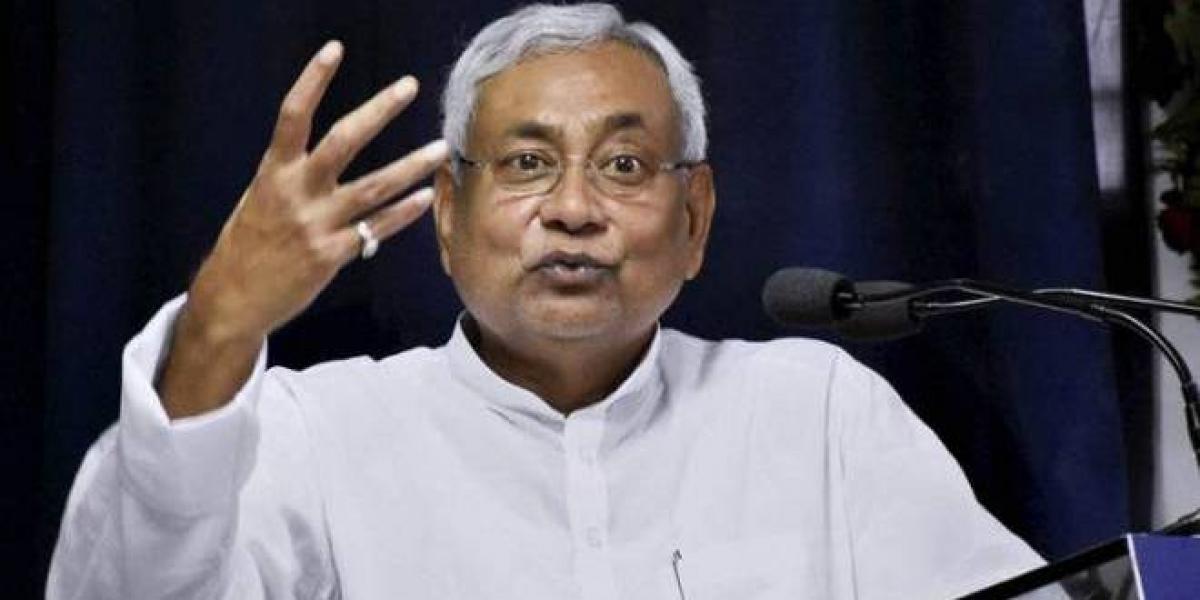Live
- Talk show host Kiranprabha inspires Sri City community
- Ethanol factory: BRS govt breached all green norms
- Israel lifts gathering restrictions in central areas following ceasefire
- Photo exhibition showcases Rayalaseema’s cultural heritage
- Delhi’s air quality remains 'very poor' with AQI at 332
- Brahmotsavam begins grandly at Tiruchanoor
- Music concert on Dec 8 to raise funds for SPB memorial, museum
- Thousands of kids take part in campaign to end child marriage
- Cyberabad CP urges swift action in crimes against women, children
- Namibia extends voting in certain areas after election disruptions
Just In

The Nitish Kumar government has held the Farakka barrage in West Bengal responsible for heavy floods in Bihar and asked the Centre to decommission it to de-silt the heavily loaded upstream of Ganga River.
The Nitish Kumar government has held the Farakka barrage in West Bengal responsible for heavy floods in Bihar and asked the Centre to decommission it to de-silt the heavily loaded upstream of Ganga River.
The state has made the recommendation, observing that the dam is the "genesis of severe" flood consequences and responsible for "alarming" silt increase in the river's upstream.
The Nitish Kumar dispensation has made the demand before an experts' committee formed by the Centre to work out guidelines for de-silting Ganga following last year's devastating floods, sources told PTI.
The Farakka barrage was constructed in the early 60s with the main purpose of helping flush out sediment deposition from Kolkata Port, besides addressing drinking water requirement in West Bengal.
"The barrage is genesis of severe flood consequences and responsible for progressive silt increase in the upstream of Ganga between Patna and Bhagalpur (in Bihar)," the state government has told the committee, according to sources.
It has claimed, "Decommissioning the barrage will help automatically de-silt the heavily loaded upstream, allowing silt to move to deltas before the sea."
Such a move, the state has said, will further help in restoration of deltas and its eco-system which is also getting adversely affected due to this barrage.
To buttress its point, the state government has referred to Kolkata Port Trust's data, which suggests that silt dredging at the port has increased from 6.40 million cubic metres annually from pre-Farakka days to four times, i.e. at 21.88 MCM annually, during 2003.
The dam was made operational in 1975.
"So the barrage is of no help...functioning of the barrage is itself giving rise to consequences of flooding," the state has said in its submission.
Among other, the government has blamed the barrage also for constricting "severely" movement of habitations and normal cycle of aquatic species, mainly fishes like Ilish (Hilsa) and Chingri.
"Their migration, reproductive cycle and survival have been affected to extent of being extinct. It also has adverse impact on dolphin sanctuary at Bhagalpur.
"The number of dolphins there is decreasing, which can be estimated from their frequency of sighting," the sources said.
The state government has also recommended the panel to come up with 'National Silt Policy' to address the problem.
Bihar faced one of its worst floods as Ganga swelled in August last year, claiming lives of over 20 persons and affecting 20 lakh people.

© 2024 Hyderabad Media House Limited/The Hans India. All rights reserved. Powered by hocalwire.com







